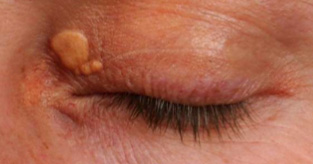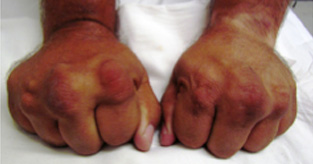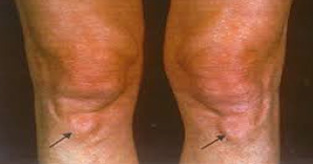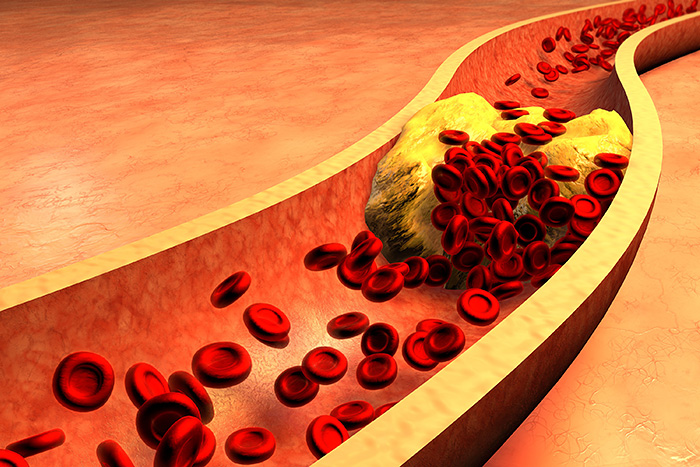What is hyperlipidemia?
Hyperlipidaemia, the medical term of high blood cholesterol, is the presence of high levels of cholesterol in the blood. Cholesterol is important in the synthesis of healthy cells and also a precursor for many of the biochemical reactions in the body.
Cholesterol can be further classified into three subtypes namely:
- Triglycerides (TGs)
- Low-density lipoproteins (LDLs)
- High-density lipoprotein (HDLs)
HDLs are normally known as ‘good cholesterol’ and LDLs are known as ‘bad cholesterol. High levels of LDLs can build up in the walls of the blood vessels and the arteries which can lead to lesser oxygen entering the heart and causing shortness of breath. Or, a clot can break off and get lodged in a narrow space causing a heart attack or stroke. High levels of HDL can protect your heart as it helps to remove the bad cholesterol from the blood stream.
Who is likely to have hyperlipidemia?
High cholesterol levels can be due to a variety of reasons including a familial history, diet, obesity and a sedentary (lack of physical activity) lifestyle.
People at higher risk include:
- Obesity
- Smoker
- Males (risk increases for female after menopause)
- Familial history of coronary heart disease
- Stressful lifestyle
- Advanced age
- Physically inactive
- Diet high in saturated fat and cholesterol
- Suffering from hypertension and/or diabetes
Normal ranges of cholesterol
TGs (mmol/L) | HDLs (mmol/L)* | LDLs (mmol/L) |
|---|---|---|
1.7-2.3 | >1.0 | 1.8-2.6 |
Table 1: Higher amounts of HDL is better
Signs and symptoms
High cholesterol on its own does not have any symptoms and it often goes unnoticed until a cardiovascular event occurs (stroke, heart attack). However, some signs of high cholesterol can be noticed as an accumulation of fatty deposits under the eyelids, fingers, and elbow or knee regions.



Long term complications
Hyperlipidaemia can lead to an increase in blood pressure resulting in hypertension. Uncontrolled cholesterol levels can eventually lead to the build-up of plague in the arteries which will cause narrowing of the arteries. This is termed as atherosclerosis and can lead to reduced oxygen supply to the heart (angina), or when a clot breaks off from a plague and travels to the heart, a heart attack. Other complications include stroke where there is disrupted blood flow to the brain due to the narrowing of the blood vessels or when a plague lodges in the arteries in the brain. The combination of hypertension and hyperlipidaemia increases the risk of cardiovascular events such as stroke and heart attack.
What can I do to manage the condition?
- Healthier diet
- Saturated fats are normally found in red meat and full fat dairy products. Decreasing consumption of saturated fats can reduce LDL in the blood
- Eliminate trans fats (partially hydrogenated vegetable oil) that are normally found in margarine and cookies
- Eat foods rich in omega-3 fatty acids which can be found in fish such as salmon, mackerel or walnuts and flaxseeds
- Avoid sweet drinks and switch to plain water
- Quit smoking
- Smoking decreases HDL levels
- Within twenty minutes of quitting, your blood pressure and heart rate recover from the cigarette-induced spike
- Within three months of quitting, your blood circulation and lung function begin to improve
- Within a year of quitting, your risk of heart disease is half that of a smoker
- Limit alcohol consumption
- Health promotion board has recommended no more than two standard drinks a day for men and no more than one standard drink for women, A standard alcoholic drink is defined as one can (330ml) of regular beer, half a glass (175ml) of wine and one shot (35ml) of spirit
- Too much alcohol can lead to serious health problems such as high blood pressure and strokes
- Exercise & Lose weight
- Losing as little as 5% of body weight can lower your cholesterol levels
- Combination of weight loss and a healthy diet can lead to lower LDL levels with similar efficacy to cholesterol lowering drugs
- Aim for 150 minutes of physical activity a week as per health promotion board
- Health benefits of regular physical activity include a 20 – 50% reduced risk of premature death, incidence of coronary heart disease, type 2 diabetes, depression, stroke, high blood pressure, colon cancer and breast cancer
- Supplements
- Fish oil – Fish oil is derived from the tissues of oily fish. It contains omega-3 fatty acids and it helps in the reduction of inflammation and also triglyceride levels. However, it does not reduce LDL levels. Usual dosing of fish oil can range from 2-5g a day
- Red yeast rice – Red yeast rice is often used in traditional Chinese medications and it contains cholesterol lowering agents. One of the compounds is monacolin K, which is found in the prescription drug lovastatin. Pregnant or breastfeeding women should avoid taking such supplements
Want to find out more?
Reference
- Durrington, P. (2003, August 30). Dyslipidaemia. Retrieved from https://www.ncbi.nlm.nih.gov/pubmed/12957096.
- 2019 ACC/AHA Guideline on the Primary Prevention of Cardiovascular Disease. (n.d.). Retrieved from https://www.acc.org/latest-in-cardiology/ten-points-to-remember/2019/03/07/16/00/2019-acc-aha-guideline-on-primary-prevention-gl-prevention.
- Miller, M. (n.d.). Signs and Symptoms of Dyslipidemia: Summary. Retrieved from https://www.medscape.org/viewarticle/585045.
- National Population Health Survey 2016/17. (n.d.). Retrieved from https://www.moh.gov.sg/resources-statistics/reports/national-population-health-survey-2016-17.
- High Blood Cholesterol. (n.d.). Retrieved from https://www.healthhub.sg/a-z/diseases-and-conditions/52/highbloodcholesterol.










